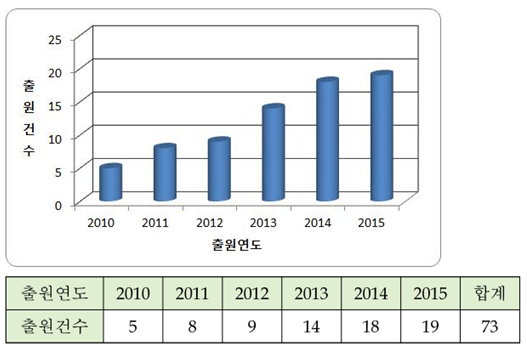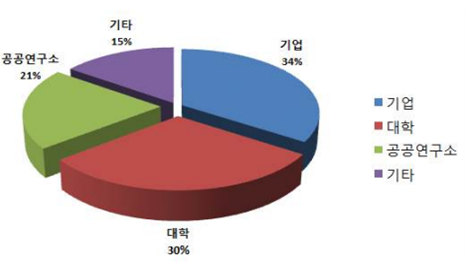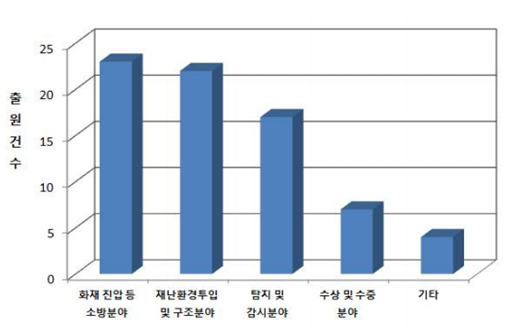Korean Intellectual Property Office (KIPO) announces analysis result of 51 patents applied from 2013 to 2015
Interest in disaster response robots which can be deployed to the rescue of human lives or disaster recovery in place of human is increasing. Young-Ho Kwon, Director of Robot Automation Screening, KIPO, said that “development of disaster response robot technology is urgently demanded with frequency of natural disasters increasing globally.”
 ▲Current status of patent application for disaster response robot by year
▲Current status of patent application for disaster response robot by year
According to KIPO, the annual average number of domestic patent applications related to disaster response robots used to be only 2 to 3 (based on application date). However, it increased to 22 during the period from 2010 to 2012 and to 51 during the period from 2013 to 2015, showing continuous increase ever since 2010.

▲
Current status of patent application for disaster response robot by applicant
In terms of applicant percentage related to disaster response robots, companies accounted for 34%, universities 30%, public research laboratories 21% and individuals 15%. The statistics shows that there were no significant difference between companies, universities and public research laboratories.
The technology trend for patent application since 2010 shows that both fire-fighting and disaster deployment and rescue fields had the high percentage of 30% respectively, detection and surveillance field had 23%, surface and subsurface field 10% and others 5%. Patent applications for marine accident-related surface and subsurface field have been steadily increasing, too.

▲
Current status of patent application for disaster response robot by trend
Explaining that “disaster response robots require complex and integrated technologies including mechanical design technology, self-position recognition technology, thing and environment awareness technology, information and communications technology, battery performance enhancement technology, etc.,” Young-Ho Kwon of KIPO emphasized that “it truly has a great ripple effect on various relevant industries.”